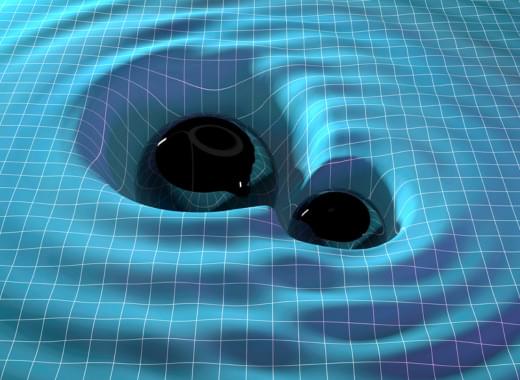Researchers have come up with an optical storage device that has the same shape and size as a DVD, but can store 1.6 petabits of data.



A team of researchers have claimed to have recently detected a telltale signature of stimulated Hawking radiation from a post-merger black hole. If the researchers’ analysis of gravitational wave data is correct, then they may have found the first evidence of Planck-scale quantum structure at the event horizon of a black hole (quantum horizons). The key signature of a non-classical horizon is an echo signal in the gravitational waves that are detected after the primary merger event of a binary black hole system. The evidence is tentative, but nevertheless tantalizing. Such research is pivotal to advancing our understanding of quantum effects in strong gravity, where novel aspects of the theory of quantum gravity may be hard at work, as exemplified in the remarkable research The Origin of Mass and the Nature of Gravity, in which physicist Nassim Haramein with his colleagues Dr. Olivier Alirol and Dr. Cyprien Guermonprez have demonstrated that the mass-energy of Hawking radiation from a baryonic-scale mini black hole exactly produces the observed rest-mass energy of the proton, demonstrating that the proton rest-mass is the result of quantum vacuum fluctuations of the electromagnetic field in strongly curved spacetime. The analysis of gravitational wave data for an echo signature, the smoking gun of quantum horizons and Hawking radiation, in conjunction with recent observation of Unruh radiation from accelerating electrons, is a significant confirmation of quantum gravitational predictions of unified physics, which we see in solutions like that of Haramein et al. are the solution to understanding the source of mass and force originating from quantum vacuum fluctuations in curved spacetime. It is a major advancement because Unruh-Hawking radiation can no longer be said to be “only theoretical”


Remarkable new images from the Odysseus mission capture the spacecraft — the first US-made vehicle to make a soft touchdown on the moon in five decades — in the moments directly after its harrowing and historic touchdown on the lunar surface.
Intuitive Machines, the Houston-based company that developed the Odysseus lander, shared the photos at a news briefing Wednesday. During the news conference, officials from Intuitive Machines and NASA — which paid to fly science instruments on the mission — also confirmed that all of Odysseus’ instruments are transmitting data, leading them to declare the mission successful despite significant setbacks during the spacecraft’s dramatic descent to the surface.
Mission controllers were celebrating the success, cheering “what a magnificent job that robust, lucky lander did all the way to the moon,” said Intuitive Machines CEO Steve Altemus.


In this article, realistic quantitative estimation of dark matter and dark energy considered as informational phenomena have been computed, thereby explaining certain anomalies and effects within the universe. Moreover, by the same conceptual approach, the cosmological constant problem has been reduced by almost 120 orders of magnitude in the prediction of the vacuum energy from a quantum point of view. We argue that dark matter is an informational field with finite and quantifiable negative mass, distinct from the conventional fields of matter of quantum field theory and associated with the number of bits of information in the observable universe, while dark energy is negative energy, calculated as the energy associated with dark matter.
In paid collaboration with reMarkable, I am happy to recommend this paper tablet which has made my workflow much more efficient and enjoyable.
Azeem speaks with Professor Yoshua Bengio. In 2018, Yoshua, Geoff Hinton and Yann LeCun were awarded the Turing Award for advancing the field of AI, in particular for their groundbreaking conceptual and engineering research in deep learning. This earnt them the moniker the Three Musketeers of Deep Learning. I think Bengio might be Aramis: intellectual, somewhat pensive, with aspirations beyond combat, and yet skilled with the blade.
With 750,000 citations to his scientific research, Yoshua has turned to the humanistic dimension of AI, in particular, the questions of safety, democracy, and climate change. Yoshua and I sit on the OECD’s Expert Group on AI Futures.

—SingularityNET is a decentralized marketplace for artificial intelligence. We aim to create the world’s global brain with a full-stack AI solution powere…